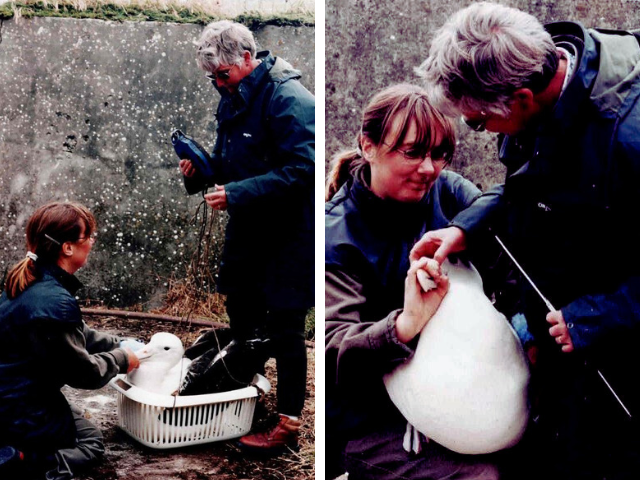The world's first Albatross egg hatched in an incubator - it was a Brinsea!
Underdown: The Legendary Albatross – Hatched in a Brinsea Incubator!
We are thrilled to share the heartwarming story of Underdown, the world’s first albatross hatched in a Brinsea incubator! This incredible milestone was made possible with the help of a Brinsea Polyhatch, and we received the story directly from Frank Weeks, a long-time Brinsea supporter in New Zealand.
The Journey of Underdown: The First Albatross Hatched in an Incubator
In an email from Frank Weeks, we learned about Underdown’s remarkable life, from the moment he was hatched to his incredible journey as a Northern Royal Albatross. Here’s the inspiring story of resilience and adventure that captivated researchers and conservationists alike.
A World First: Albatross Egg Hatched in a Brinsea Polyhatch
On November 4, 1995, an albatross egg was laid in New Zealand. Unfortunately, the egg was accidentally cracked by the parents. However, thanks to innovative conservation efforts, the egg was removed from the nest, patched up, and carefully incubated in a Brinsea Polyhatch – marking the world’s first-ever albatross egg hatched in an incubator!
The egg successfully hatched on January 24, 1996, and the chick was named Underdown. This historic moment set a precedent for future albatross conservation efforts, demonstrating the power of incubation technology in preserving endangered species.
Underdown's Life: A Story of Adventure and Resilience
After hatching, Underdown fledged on October 10, 1996 and embarked on years of travel across the seas. He returned to the colony in December 1999, where researchers weighed and banded him with a distinctive white-over-black band.
Though Underdown's returns to the colony were irregular, he consistently amazed researchers with his resilience. In 2004, he made his long-awaited return and found a mate by November 2006. His first chick hatched in January 2007, marking a significant milestone in Underdown’s life.

Underdown the Albatross, hatched in a Brinsea Polyhatch
Challenges and Triumphs: Conservation at Work
Despite the challenges faced in raising chicks, Underdown proved to be a dedicated parent. In 2015, he returned with a new mate and successfully raised another chick. However, not all efforts were without difficulty. In 2017, Underdown's egg had to be incubated by foster parents after being abandoned, but the chick, named Foster, was successfully raised. This highlighted the adaptability of conservation teams in ensuring the survival of these majestic birds.
In 2018, Underdown returned, but his egg sadly didn’t survive. 2021 brought a glimmer of hope as Underdown and his partner successfully hatched another chick, which was tracked flying along the coast of Chile. Albatrosses are known for their unique flight patterns, gliding on updrafts rather than flapping their wings, which allows them to cover immense distances effortlessly.
Unfortunately, since 2021, Underdown and his partner have not been seen, raising concerns about his fate. Despite this, Underdown’s legacy endures as a testament to the resilience and determination of the Northern Royal Albatross.
The Legacy Behind the Name "Underdown"
The name Underdown carries a rich history. It originates from a farm in Yarcombe, England, where Frank Weeks was evacuated during World War II. This farm later inspired Frank to name his twelve-acre property in Napier, New Zealand, as Underdown, marking the beginning of several successful ventures under that name, including a cattery and a poultry equipment business, Underdown Supplies, where Frank sold Brinsea incubators.
When the world’s first incubator-hatched albatross came along, it was naturally named Underdown, carrying forward this legacy.

